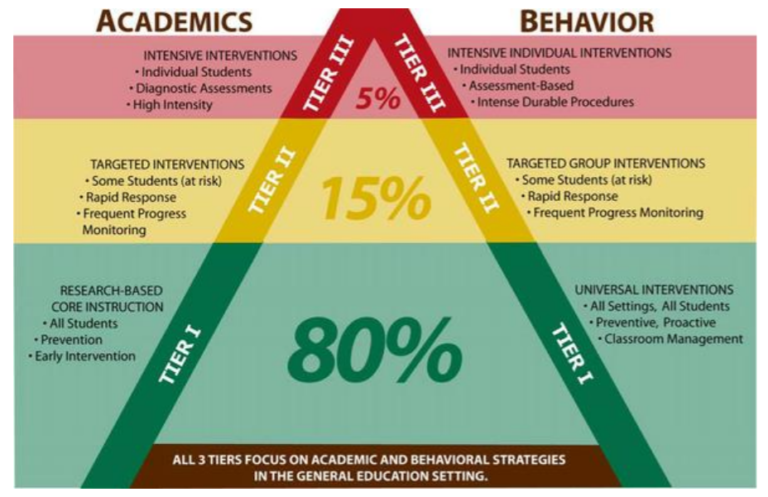SWPBS
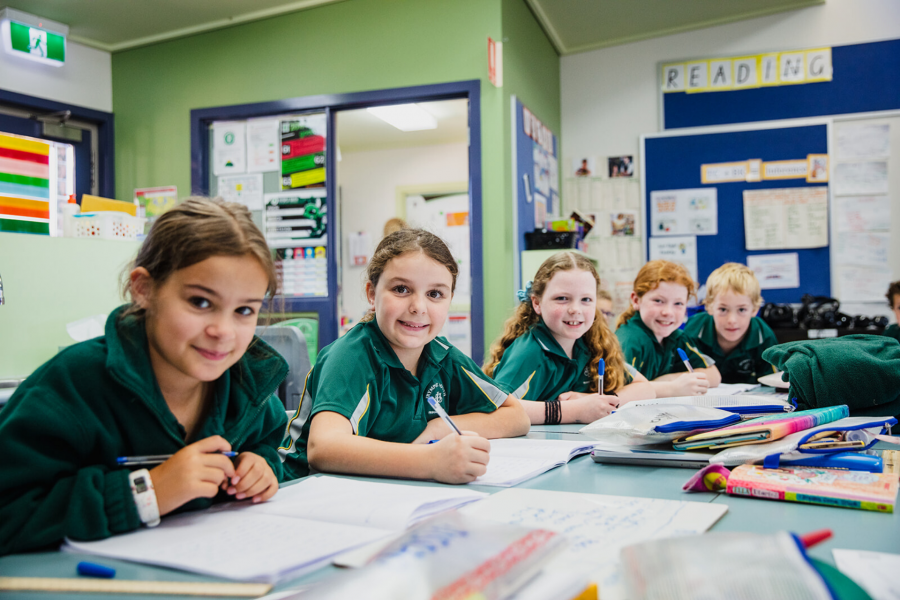
SWPBS supports I.S.P.S to improve the social, emotional, behavioural and academic outcomes for all students.
The SWPBS Framework has supported teachers and students to focus more on relationships and classroom instruction. Students and staff benefit from:
- increased respectful and positive behaviour
- increased time focused on instruction
- improved social-emotional wellbeing
- positive and respectful relationships among students and staff
- increased adoption of evidence-based instructional practices
- a predictable learning environment with improved perceptions of safety and increased attendance
School values
The school values were reviewed in 2022 by the students, parents and staff at Irymple South Primary School. These values are embedded into the Curriculum; the expected behaviours, as described in the Matrix of Expectations, are explicitly taught at each year level. We also acknowledge expected behaviours as a whole school.
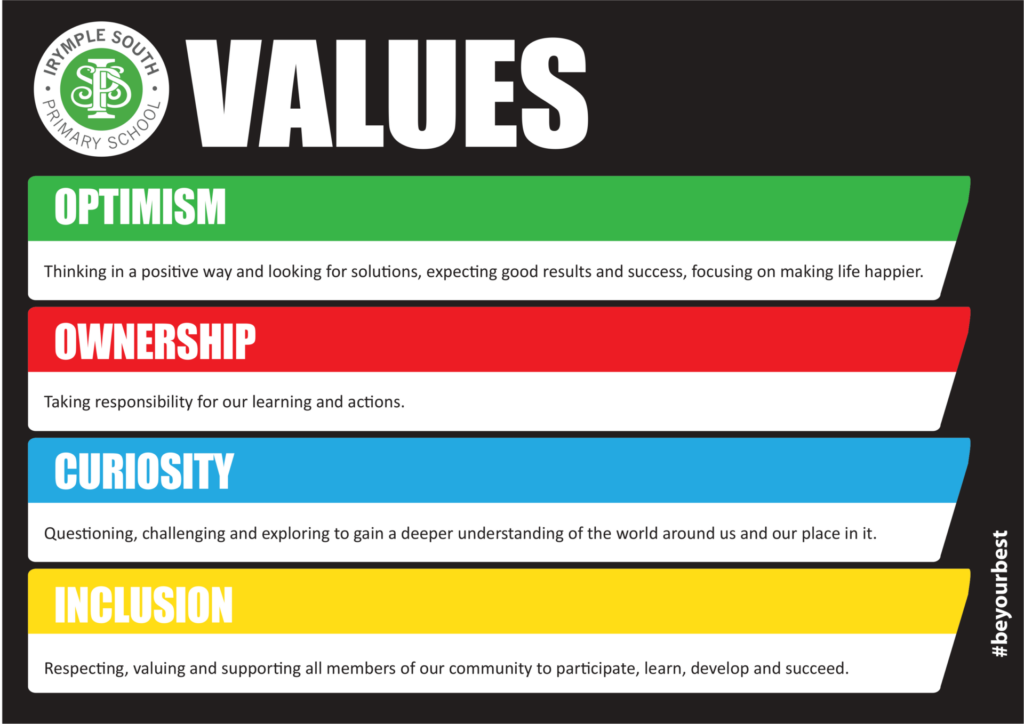
MATRIX of Expectations
Clearly defined and positively stated examples of behaviour are listed in the Matrix of Expectations for each of the four values. These expected behaviours apply at all times, in all settings.
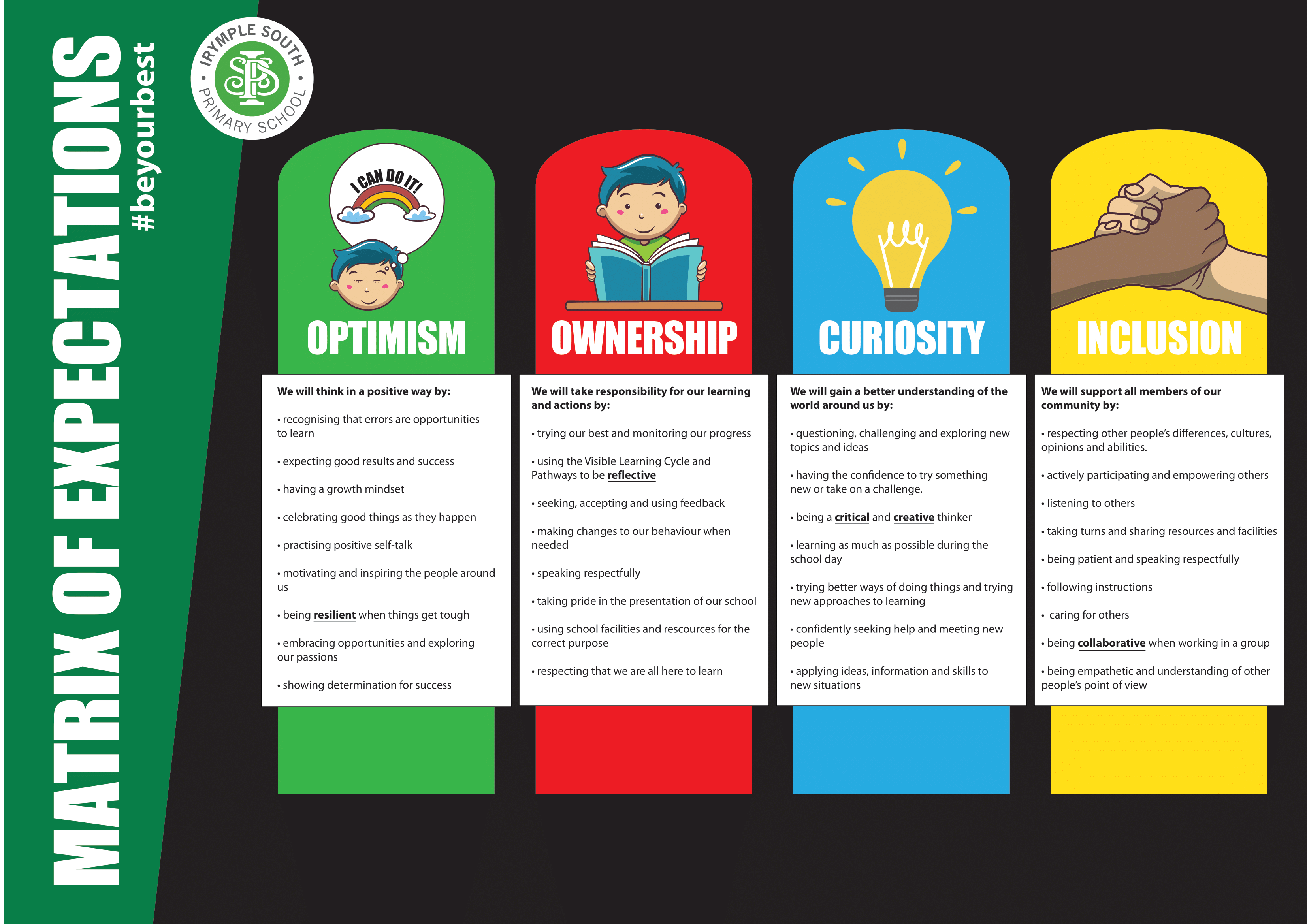
CONTINUUM OF PROCEDURES & RESPONSE TO INAPPROPRIATE BEHAVIOUR
The Continuum of Procedures for responding to inappropriate behaviour is a whole school approach to encouraging expected behaviours and discouraging inappropriate behaviour. School wide systems are in place to acknowledge expected behaviours and to promote commitment from all members of the school community.
The Continuum of Response identifies specific strategies and responses to minor and major behavioural infractions and encourages consistency when managing inappropriate behaviour.
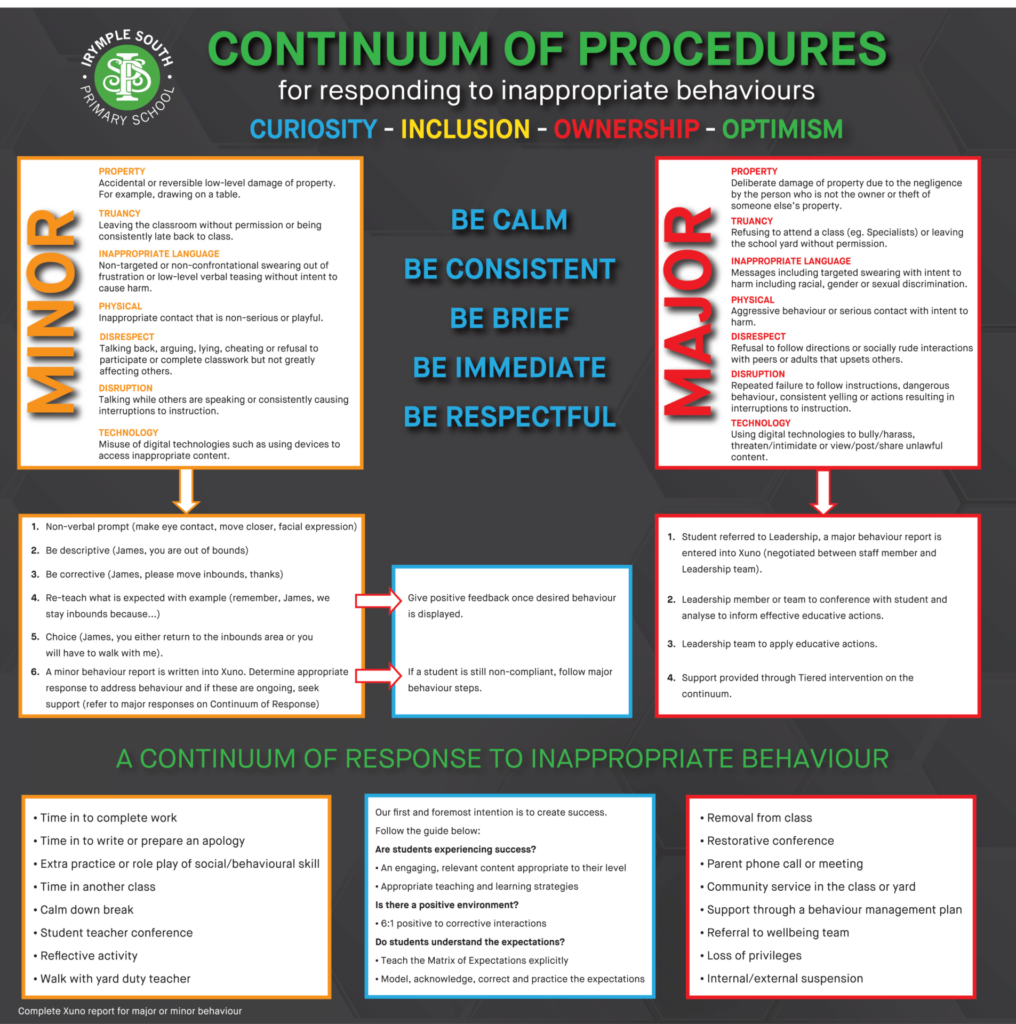
Irymple South Primary uses a tiered intervention framework which invests in:
- primary prevention (tier 1): school and classroom-wide systems for all students, staff and settings (approximately 80% of students)
- secondary prevention (tier 2): specialised group systems for students with at-risk behaviour (approximately 15% of students)
- tertiary prevention (tier 3): specialised, individualised systems for students with high-risk behaviour (approximately 5% of students)
